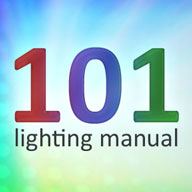riri7707
Full time elf
Hi,
I have some thoughts about the availability of such device:
Just simply prepare your shows on your PC or laptop, record them on a DMX recorder, then playback on demand
without the needs of computer, just as a standalone device.
I found in the market such devices ( for lightshows party), but very limited; not enough fixtures, steps, limited DMX channels and poor timming on lenghts of the sequences. (between $100/$200).
I didn't invest yet on that, as i don't found something really relevant four our light word.
The best will be to have one controller with scheduler, internal card reader, 512 DMX channels, external synch triggers, etc...
I assume this kind of DMX Recorder/Playback can be a master piece to add to DIY lights, for those who don't want to always have a leg attached to the computer, prevent from freeze, computer crash during the show, power failure, etc...
Your thoughts are welcome...
Cheers, Henri
I have some thoughts about the availability of such device:
Just simply prepare your shows on your PC or laptop, record them on a DMX recorder, then playback on demand
without the needs of computer, just as a standalone device.
I found in the market such devices ( for lightshows party), but very limited; not enough fixtures, steps, limited DMX channels and poor timming on lenghts of the sequences. (between $100/$200).
I didn't invest yet on that, as i don't found something really relevant four our light word.
The best will be to have one controller with scheduler, internal card reader, 512 DMX channels, external synch triggers, etc...
I assume this kind of DMX Recorder/Playback can be a master piece to add to DIY lights, for those who don't want to always have a leg attached to the computer, prevent from freeze, computer crash during the show, power failure, etc...
Your thoughts are welcome...
Cheers, Henri


